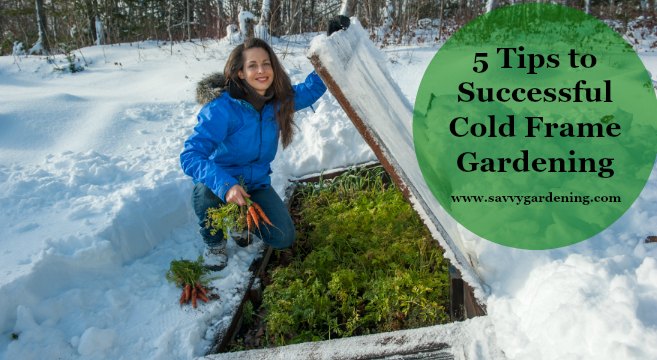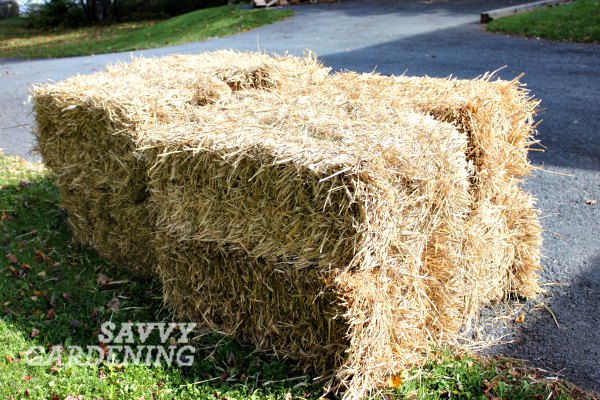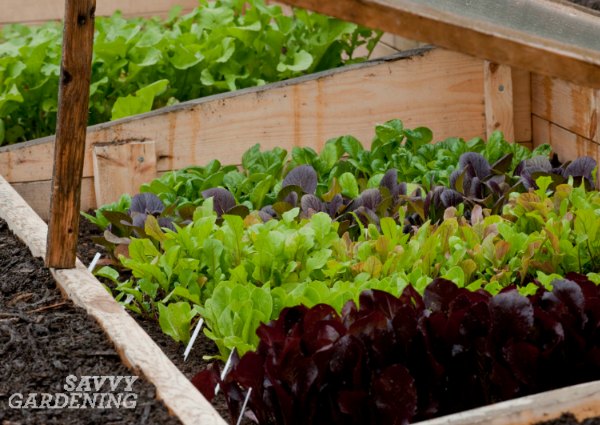

Cold frame gardening is an easy way to extend the homegrown harvest into late fall and winter. A cold frame is just a box with a clear top. It’s unheated, but captures solar energy and shelters crops from the elements – cold temperatures, wind, ice, and snow. You don’t need a large garden to accommodate a cold frame. Even a small, urban garden will benefit from this simple structure. In my book, The Year Round Vegetable Gardener, I offer a lot of tips and ideas for gardening with cold frames. Here are a few of my favourites…
5 tips to successful cold frame gardening:
1 – Pick the right site – To get the most out of your cold frame, you’ll need to pick the right spot. Look for a site that offers full sunshine and shelter from prevailing winds, and face the frame towards the south. You can place it against a house, deck, shed, garage, greenhouse, or allow it to stand free in the garden. My frames are free-standing structures but I do pile straw bales or bags of leaves on the north side for added winter insulation.
Related post: Mustard greens for winter harvesting
2 – Choose your materials wisely – The box of a cold frame can be made from many materials; wood, polycarbonate, straw bales, bricks, and so on. I’ve found that material selection can play a large role in successful cold frame gardening. For example, many gardener centres sell frames made with polycarbonate sides and tops. These are great in spring and fall, but in my region, they aren’t insulating enough to shelter salad greens throughout winter. Instead, I’ve gotten great results from cold frames built with wood and topped with polycarbonate.

3 – Ventilate – I can’t stress the importance of proper ventilation in a cold frame, especially in autumn or spring when the daytime temperature can fluctuate dramatically – even in cloudy weather! For me, I prop my cold frames open when I know the daytime temperature is going to reach 4 C (40 F). If you’d rather be more ‘hands off’, you can purchase an inexpensive automatic vent opener to open top of your frame when the temperature reaches a certain point.
Not ventilating your frames can result in several issues. The biggest one, of course, is frying your plants! But, inadequate ventilation can also lead to your fall and winter crops growing in conditions that are consistently too warm. This encourages soft growth which is easily damaged in cold weather. Crops that are given a bit of ‘tough love’ and grown with proper ventilation under cooler conditions will be better prepared to deal with the frigid temperatures of late fall and winter, and be less prone to cold damage.
Curious gardeners may find it fun to use a digital thermometer to monitor the minimum and maximum temperatures in their cold frame. It’s amazing how much the inside of a frame can warm up – even in January!

4 – Keep tops clear – My garden is surrounded by tall, deciduous trees and when the leaves begin to fall in mid-autumn, the tops of my frames are quickly covered. They’re easy to clear away, but if they were left on top of the cold frame sashes for too long, the crops may suffer for lack of light. Come winter, the same rule applies. Brush off or remove snow from frames regularly to prevent ice build up. I use a a sturdy push broom for this quick task.
5 – Foil Mother Nature – There are many easy ways to boost light and heat retention in cold frames. To reflect more light onto the plants, you can paint the inside walls of the structure white or line them with aluminum foil. To capture more heat, leave room for a few black painted one gallon water jugs. Once filled with water, they will absorb heat during the day and release it slowly during the night, raising the temperature inside the cold frame.
Original article and pictures take http://savvygardening.com/cold-frame-gardening/ site
Комментариев нет:
Отправить комментарий